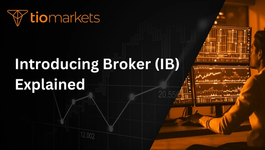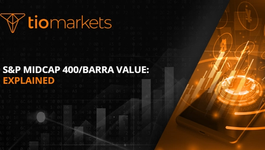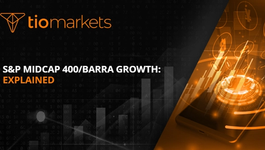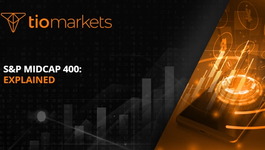Price discovery: Explained
BY TIOmarkets
|August 14, 2024Price discovery is a fundamental concept in the world of trading and financial markets. It refers to the process by which the price of an asset is determined by the interactions of buyers and sellers in the market. This process is crucial in establishing the fair market value of a commodity, security, or any other traded asset.
Understanding price discovery is essential for traders, as it provides insight into the dynamics of supply and demand in the market, and how these forces influence the price of assets. In this comprehensive glossary entry, we will delve deep into the concept of price discovery, its mechanisms, and its importance in trading.
Understanding Price Discovery
Price discovery is the mechanism by which the collective actions of buyers and sellers determine the price of a particular asset in the market. This process is continuous and dynamic, constantly adjusting to new information, market conditions, and changes in supply and demand.
Price discovery is not a simple process. It involves the interaction of various market participants, each with their own perceptions of the asset's value, their own trading strategies, and their own levels of risk tolerance. These interactions result in a price that reflects the current consensus on the asset's value.
The Role of Supply and Demand
At the heart of price discovery is the interplay between supply and demand. When demand for an asset exceeds its supply, the price tends to rise. Conversely, when supply exceeds demand, the price tends to fall. This dynamic is constantly at work in the market, influencing the price of assets.
However, supply and demand are not static. They are influenced by a variety of factors, including economic indicators, market sentiment, geopolitical events, and even natural disasters. These factors can cause sudden shifts in supply and demand, leading to rapid changes in price.
The Role of Market Participants
Market participants play a crucial role in price discovery. These include buyers and sellers, but also intermediaries such as brokers and dealers. Each participant has their own view of the asset's value, and their trading actions reflect this view.
For example, a buyer who believes that an asset is undervalued may be willing to pay a higher price for it, pushing the price up. Conversely, a seller who believes that the asset is overvalued may be willing to sell it at a lower price, pushing the price down. These individual actions, when aggregated, result in the market price.
Price Discovery Mechanisms
Price discovery occurs through several mechanisms, including the bid-ask spread, price auctions, and market matching. Each of these mechanisms has its own characteristics and influences the price discovery process in different ways.
Understanding these mechanisms can help traders make more informed decisions and better understand the dynamics of the market.
The Bid-Ask Spread
The bid-ask spread is a key mechanism in price discovery. It refers to the difference between the highest price a buyer is willing to pay for an asset (the bid) and the lowest price a seller is willing to accept (the ask). The bid-ask spread reflects the current consensus on the asset's value and is constantly changing in response to market conditions.
A narrow bid-ask spread indicates a high level of liquidity, meaning there are many buyers and sellers in the market. A wide bid-ask spread, on the other hand, indicates a low level of liquidity, meaning there are fewer buyers and sellers. This can make it more difficult to buy or sell the asset without affecting its price.
Price Auctions
Price auctions are another important mechanism in price discovery. In a price auction, buyers and sellers submit their bids and asks, and the exchange matches these orders to determine the price. This process ensures that the price reflects the highest price a buyer is willing to pay and the lowest price a seller is willing to accept.
Price auctions can be either continuous or periodic. In a continuous auction, orders are matched as they arrive. In a periodic auction, orders are collected over a certain period and then matched at once. Each type of auction has its own advantages and disadvantages, and the choice between them depends on the specific characteristics of the market.
Market Matching
Market matching is a process by which an exchange matches buy and sell orders to facilitate trades. This process is crucial in price discovery, as it ensures that the price reflects the current balance of supply and demand in the market.
Market matching can be done in several ways, including price-time priority (where orders are matched based on price and time of submission) and pro-rata matching (where orders are matched based on their proportion of the total order volume). Each method has its own implications for price discovery and market dynamics.
The Importance of Price Discovery in Trading
Price discovery is of paramount importance in trading. It ensures that prices reflect the current consensus on the value of assets, providing a basis for traders to make informed decisions. Without effective price discovery, markets would be less efficient, and trading would be more risky.
Furthermore, price discovery provides transparency, as it allows all market participants to see the same price information. This transparency is crucial in promoting fair and competitive markets.
Price Discovery and Market Efficiency
Price discovery contributes to market efficiency by ensuring that prices reflect all available information. In an efficient market, prices quickly adjust to new information, meaning that it is impossible to consistently achieve above-average returns by trading on publicly available information.
However, markets are not always efficient. Factors such as transaction costs, restrictions on short selling, and information asymmetry can hinder the price discovery process and lead to inefficiencies. Understanding these factors can help traders identify opportunities and manage risks.
Price Discovery and Risk Management
Price discovery also plays a crucial role in risk management. By providing a basis for the valuation of assets, it allows traders to assess the potential risks and rewards of their trading strategies.
For example, if a trader believes that the market price of an asset does not reflect its true value, they may decide to take a position that profits from the expected price correction. However, this strategy involves risk, as the market price may not adjust as expected. Understanding the price discovery process can help traders manage this risk.
Conclusion
Price discovery is a fundamental concept in trading and financial markets. It is the process by which the price of an asset is determined by the interactions of buyers and sellers in the market. Understanding price discovery is essential for traders, as it provides insight into the dynamics of supply and demand, the role of market participants, and the mechanisms of price formation.
By understanding the price discovery process, traders can make more informed decisions, manage their risks more effectively, and potentially achieve better trading outcomes. As such, price discovery is a topic that deserves careful study and understanding by all market participants.
Start Your Trading Journey with TIOmarkets
Now that you're equipped with the knowledge of price discovery, take the next step in your trading career with TIOmarkets. As a top rated forex broker, we offer a robust online trading platform where you can trade over 300 instruments across Forex, indices, stocks, commodities, and futures markets. Benefit from low fees and join a growing community of over 170,000 traders in more than 170 countries. Enhance your skills with our comprehensive educational resources and step-by-step guides. Ready to dive into the markets? Create a Trading Account today and unlock the potential of informed trading decisions.

Risk disclaimer: CFDs are complex instruments and come with a high risk of losing money rapidly due to leverage. You should consider whether you understand how CFDs work and whether you can afford to take the high risk of losing your money. Never deposit more than you are prepared to lose. Professional client’s losses can exceed their deposit. Please see our risk warning policy and seek independent professional advice if you do not fully understand. This information is not directed or intended for distribution to or use by residents of certain countries/jurisdictions including, but not limited to, USA & OFAC. The Company holds the right to alter the aforementioned list of countries at its own discretion.
Join us on social media

Behind every blog post lies the combined experience of the people working at TIOmarkets. We are a team of dedicated industry professionals and financial markets enthusiasts committed to providing you with trading education and financial markets commentary. Our goal is to help empower you with the knowledge you need to trade in the markets effectively.





